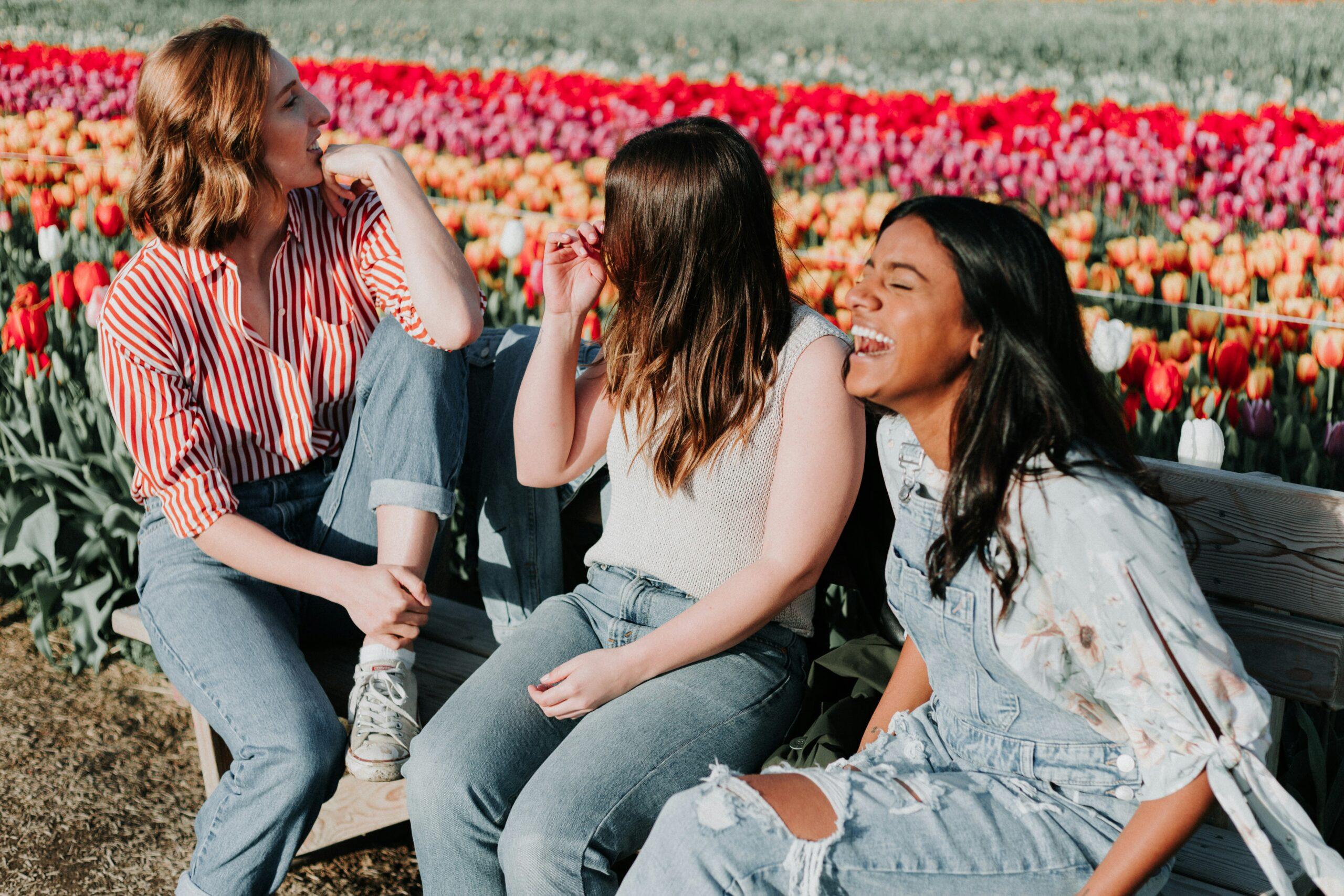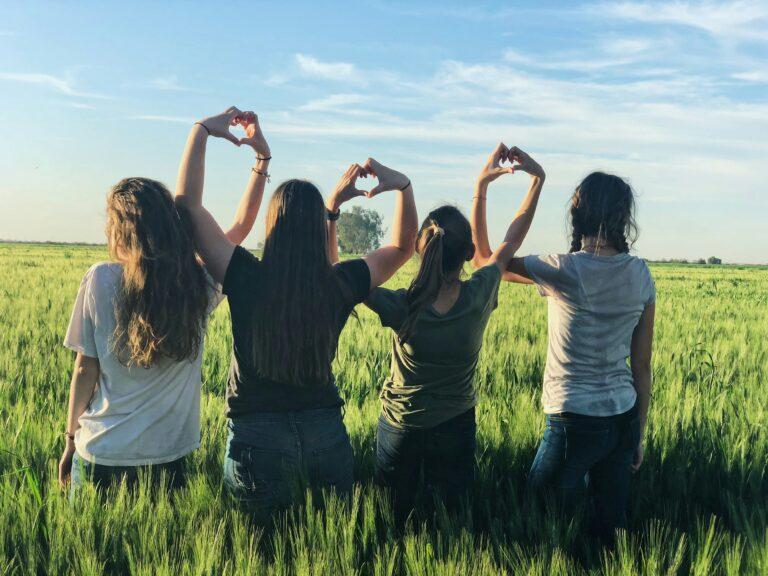Female Friendships: The Gift With Unexpected Surprises Hidden Inside
Female friendships are vital to our long-term well-being. But if a friendship is struggling, especially with close friends, which happens more often than any of us would like to admit (right?), we should be able to troubleshoot and figure out why. To do so, it’s important to understand how female bonding forms and manifests in our lives.
Table of Contents
Why close female friendships feel like family
There’s a scientific reason why we feel close girlfriends are like sisters or family. If you think about it from an evolutionary perspective in animals and humans, the females were responsible for nurturing and protecting offspring while the males hunted and gathered food. A single female and her children wouldn’t have survived in the wild, if they were left alone. To increase their chances of survival, the females formed social groups to share resources, access to food, and help protect each other from predators. Trust within these social groups was established through behaviors of play, chatter, and being vulnerable.
We are biologically programmed to create relationships that mimic family-like bonds. This also explains why close female friendships are so intimate, emotional, and expressive. This is arguably the most beautiful and most hurtful part of female friendships because we love hard, but fight harder when trust and expectation shift.
The high demands of female friendships
We easily forgive and forget if a stranger or someone not considered close says or does something hurtful or breaks trust. But if a close friend did the same thing, there is so much disappointment and hurt. We might even hold a grudge or not easily forgive for longer periods because we have much higher expectations from those we have chosen to trust deeply and be vulnerable with.
Titles like “bestie”, “BFF”, “4 am friend”, and “soul sister” while playful and cute, actually carry a lot more weight (and science) than you might think. That role is not to be taken lightly.
Trust and advice
There’s a phenomenon known as ‘mate-choice copying‘ in which wild female animals take social cues from their “friends” to choose the best mate. If they see other females attracted to a particular male or a male successfully courting another female, they will “copy” and select that partner for themselves too. This is a strategy that saves time and energy by relying on others’ choice of good genes.
Applying this concept to humans would be similar to how we ask close friends for their opinions to help with decision-making because there is social proof — if someone you trust has made a choice, it’s likely a good one — and efficiency — instead of assessing all the options, “copying” is quick and easy. We trust the opinions of those closest to us.
Companionship and support
It’s no secret that friends play an important role in our lives but have a more pivotal role in good long-term health and well-being. Having close, stable friends reduces stress, improves self-confidence, establishes social context, and enhances the ability to fight conflict. Female baboons and horses form lifelong friendships reducing stress and conflict and promoting social stability in a group. Humans are no exception. 😀
Social learning and acceptance
This is where female friendship gets tricky because it’s not just about bonding and support; each alliance also has a “social value” that dictates where you belong in a social group structure and how you will “survive”. This is not just “mean girl” behavior, but evolutionary and evident in wild animals, too.
Primates such as bonobos, chimpanzees, and baboons form strong coalitions, which are important in establishing social stability and dominance because the alliances help females secure first access to food and protection during conflict. The bonding behaviors include grooming each other, taking care of offspring together, playing together, fighting off predators, etc.
For example, female elephants teach younger females about survival skills, migration routes, and social etiquette. Female dolphins and orcas form strong bonds and teach others about hunting techniques, navigation, and avoiding predators.
Causes of “unspoken” conflict in female friendships
We have established that female friendships are intimate, socially complex, and emotionally charged by design. So, it’s safe to assume that conflict will be similar too. Why and what do we do about it?
Intensity and intimacy
Female friendships are emotionally intimate: we share laughter, tears, joys, anger, fears, wins, losses, sorrows and so much more. So much of what is shared among a group of girlfriends isn’t shared with anyone else. There’s a very high level of trust at play here, and if any part of that trust is broken, the betrayal feels extremely personal, painful, and hard to forgive. In response, passive-aggressiveness, silent treatment, or subtle exclusion may happen.
Jealousy and competition
We are biologically programmed to protect, procreate, survive, and thrive. In nature, it’s survival of the fittest. In modern-day society, it’s the survival of the smartest. Jealousy and competition are natural filters for deciding who wins. So, we find ways to ensure we’re on top or in a position of power and this usually happens through “mean girl” behaviors such as gossip, ghosting, being left out, etc.
Not knowing how to “fight”
Due to biology and taught behaviors, we are predisposed to being supportive and considerate to reduce aggression and maintain peace in social groups. So much so that women find it hard to communicate negative or antagonizing feelings about a person or situation to that person. Being straightforward feels “aggressive”, so we do the opposite: pretend everything’s okay and hold back our true feelings. Or worse: talk about it with other people, not the person in question, thus turning the conflict into a group situation shrouded in gossip.
Expectations of loyalty and support
Let’s look at this simplified example: Friend A and Friend B meet at a social event for the first time and hit it off. They meet up a few more times and decide to be friends. Friend A feels Friend B is a ‘bestie’ while Friend B views the friendship more casually. Friend A has certain expectations of Friend B because they assume the closeness of the friendship is reciprocated, (or at least it should be) and Friend A is disappointed when Friend B doesn’t act in certain ways. It’s the same the other way around too — Friend B might find Friend A too demanding of time and attention without realizing why and push Friend A away. In both cases, there’s an imbalance of expectations from the friendship, which leads to disappointment.
Navigating conflict in friendship
Conflict in female friendships can be nuanced, indirect, and emotional, and takes longer to resolve because we are taught to value harmony and avoid open confrontation. Now that we know why, we can try to do a better job of conflict resolution.
Tips for conflict resolution
- If something is bugging you, be firm in your decision to bring it up and be upfront about it with the other person. Don’t send a vague “Hey, I need to talk to you” text. Be specific “I need to talk to you about [insert topic]. Let me know if you’re okay to talk about it on the phone or in person.”
- Find the right time and way to have the discussion. Think about what makes the other person most comfortable — text, phone call, in-person, etc. — so they’re less likely to feel attacked and get defensive and choose the right time and place to talk.
- Plan what you’re going to say. Think about what you want from the other person — what’s the outcome you’re looking for? Have some examples ready to talk about and think about what you are hoping to get out of the conversation. Acknowledgment of a mistake? An apology? Clearing up a misunderstanding?
- Be neutral. Don’t accuse. Avoid saying “You did this”. Instead, say “I feel…”. It makes the conversation a lot less accusatory and intense.
- Be ready for negative feedback and criticism. There are two POVs to consider. Listen to what your friend has to say, you don’t have to agree, but try not to get angry and escalate an already tough situation.
- Consider the possibility of redefining the friendship. Maybe you’re just not as close as you used to be. Set up new expectations and boundaries and be very honest about them.
Final thoughts
Female friendship is truly a gift. I am the person I am today because of the different groups of women who have supported and cheered me on through all the seasons of life from my tweens until today…approaching midlife and all that is to come.
I will admit it’s easy to make a friend. But building a long-lasting friendship is hard. It takes a lot of work, effort, and understanding. Not to mention it doesn’t get any easier as you get older. We shift and evolve with different stages of life. Some friendships flow with us while others change course. It’s a big lesson in knowing when to hold on, but also when to let go.
Nothing is guaranteed, except that putting in the work to keep your female friendships shining bright will be one of the best things to do for yourself. Hidden surprises and all.
Related:
How To Make New Friends As An Adult And Do It Well
Elevated Cortisol: What You Need To Know For Women’s Fitness and Health








This was such a heartwarming read! Female friendships truly are a treasure—full of support, laughter, and unexpected surprises. Loved the way you captured their essence so beautifully! 💖✨
Thank you for your kind comment and feedback, Anshul! Female friendships truly are so special, unique, and filled with surprises 🙂